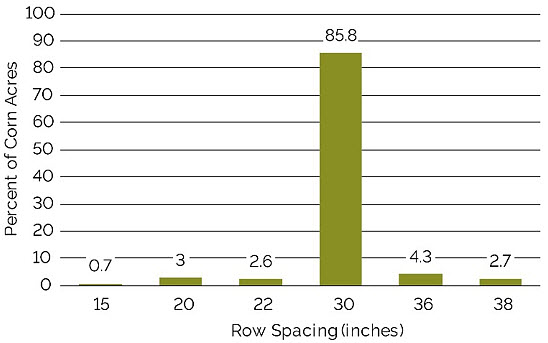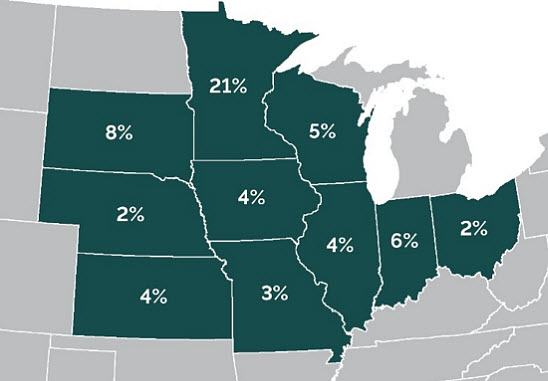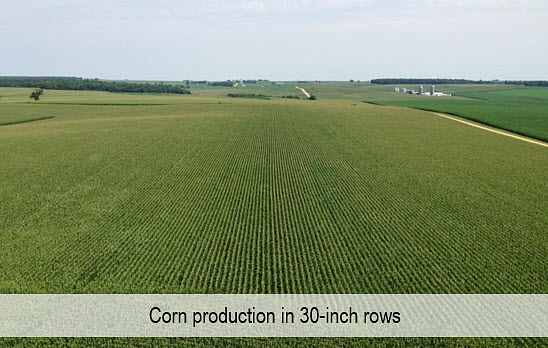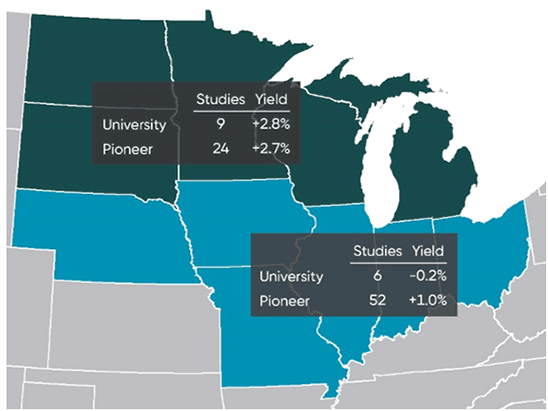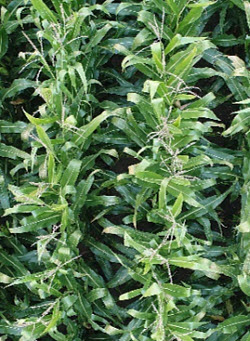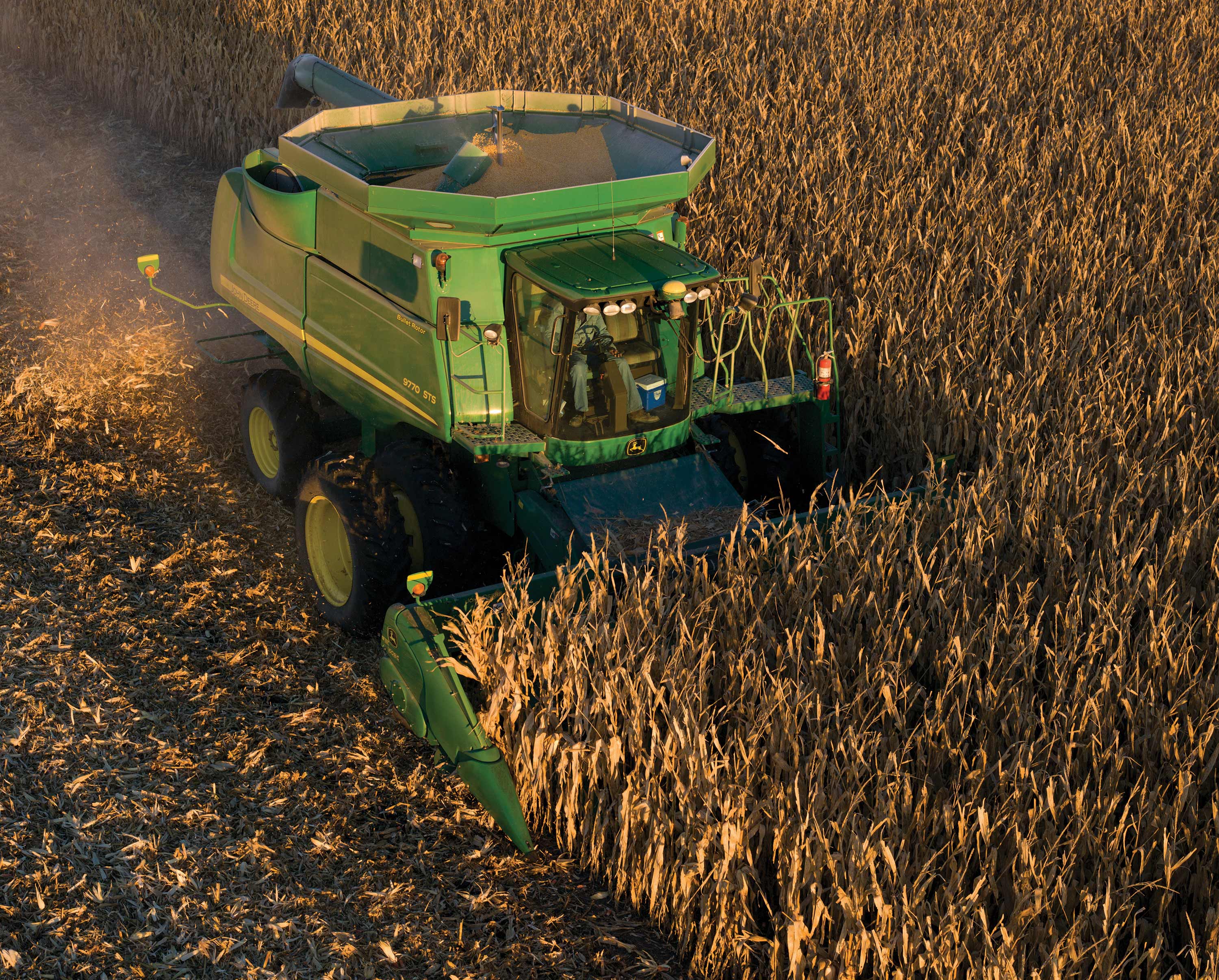Table 1. Yield advantage (%) of 15-inch, 20-, or 22-inch, and twin rows compared to 30-inch rows in recent corn row spacing research studies.
| Study |
Location |
Years |
Locs |
Hybrids |
Yield Level |
Populations |
15 |
20 or 22 |
Twin |
|---|
| |
bu/acre |
1000 plants/acre |
------ % ------ |
| 1 |
Minnesota |
92-94 |
3 |
6 |
100-150 |
25, 30, 35, 40 |
|
7.7 |
|
| 2 |
Minnesota |
97-99 |
1 |
1 |
100-150 |
33 |
|
6.2 |
|
| 3 |
Minnesota |
98-99 |
1 |
2 |
150-175 |
30 |
5.9 |
2.8 |
|
| 4 |
Minnesota |
09-11 |
6 |
3 |
175-200 |
16.5, 22, 27.5, 33, 38.5, 44 |
|
4.5* |
|
| 5 |
Michigan |
98-99 |
6 |
6 |
175-200 |
23, 26, 30, 33, 36 |
3.8 |
2.0 |
|
| 6 |
Nebraska |
09-11 |
1 |
3 |
200-225 |
28, 33, 38, 42 |
|
|
1.4 |
| 7 |
Iowa |
00-02 |
1 |
3 |
150-175 |
20, 28, 36, 44 |
1.2 |
|
|
| 8 |
N. Dakota |
06-08 |
1 |
2 |
>225 |
25, 30, 35 |
0.0 |
|
2.0 |
| 9 |
Michigan |
98-99 |
1 |
1 |
150-175 |
24, 30, 34 |
0.5 |
0.8 |
|
| 10 |
Wisconsin |
98-01 |
1 |
1 |
175-200 |
34.5** |
0.0 |
|
|
| 11 |
Iowa |
97-99 |
1 |
3 |
150-175 |
20, 28, 36 |
0.0 |
|
|
| 12 |
Iowa |
95-96 |
1 |
3 |
150-175 |
20, 28, 36 |
-0.6 |
|
|
| 13 |
Minnesota |
09-10 |
2 |
3 |
150-175 |
16.5, 22, 27.5, 33, 38.5, 44 |
|
-1.0 |
|
| 14 |
Indiana |
09-11 |
1 |
3 |
>225 |
28, 33, 38, 42 |
|
|
-1.0 |
| 15 |
Iowa |
97-99 |
6 |
6 |
150-175 |
24, 28, 32, 36 |
-1.9 |
|
|
1: Porter et al., 1997; 2: Johnson and Hoverstad, 2002; 3: Sharratt and McWilliams, 2005; 4: Coulter and Shanahan, 2012; 5: Widdecombe and Thelen, 2002; 6: Novacek et al., 2013; 7: Pecinovsky et al., 2002; 8: Albus et al., 2008; 9: Tharp and Kells, 2001; 10: Pedersen and Lauer, 2003; 11,12: Pecinovsky et al., 2002; 13: Van Roekel and Coulter, 2012; 14: Robles et al., 2012; 15: Farnham, 2001. *Average yield increase at 38,500 and 44,000 plants/acre. A significant row spacing by population interaction was observed. **Approximate final stand, which differed from target populations.

